MORE THAN MANNEQUINS: NONBINARY MODELS CONFRONT THE DARK SIDE OF FASHION FAME
As androgynous aesthetics increase in fashion, how does the industry help and harm the nonbinary community?
By Shei Marcelline
In the realm of haute couture, where fabrics weave narratives and runways echo with the resounding footsteps of those rewriting the trends of gender and style, a new chapter is being written—one that spotlights the rise of nonbinary models.
As fashion houses pivot toward inclusivity, the runway transforms into an accessory of gender expressions, seamlessly stitching the lines that have confined the definition of beauty for centuries. Amid this evolution, nonbinary models have become not just participants in the fashion industry but essential figures in reshaping the narrative beyond traditional gender norms.
Yet, the progress of inclusivity merges with the pitfalls of tokenization, as some fashion brands begin to leverage nonbinary models. Instead of serving as harbingers of change, they become subjects to an aesthetically curated spectacle.
The runway, once a stage criticized by the media for developing a standard image of conventional beauty, is now being examined by the same nonbinary models who walk it.
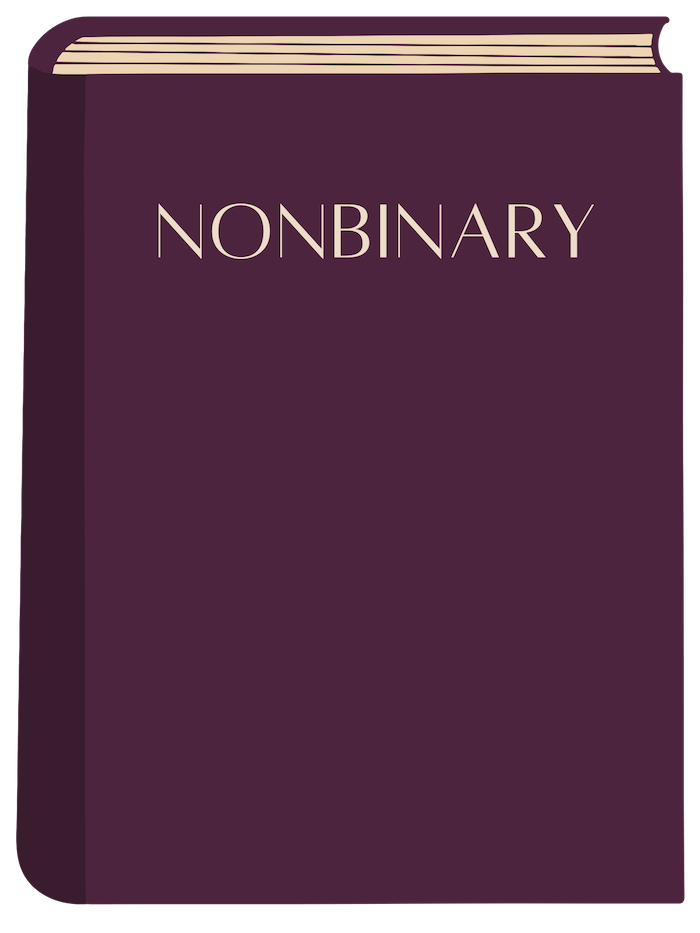
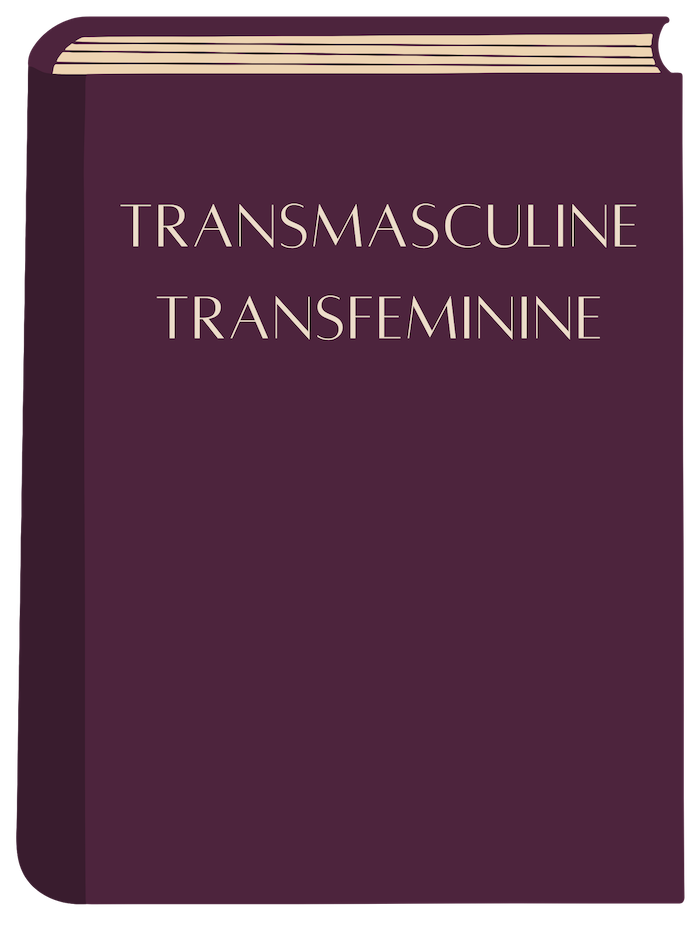
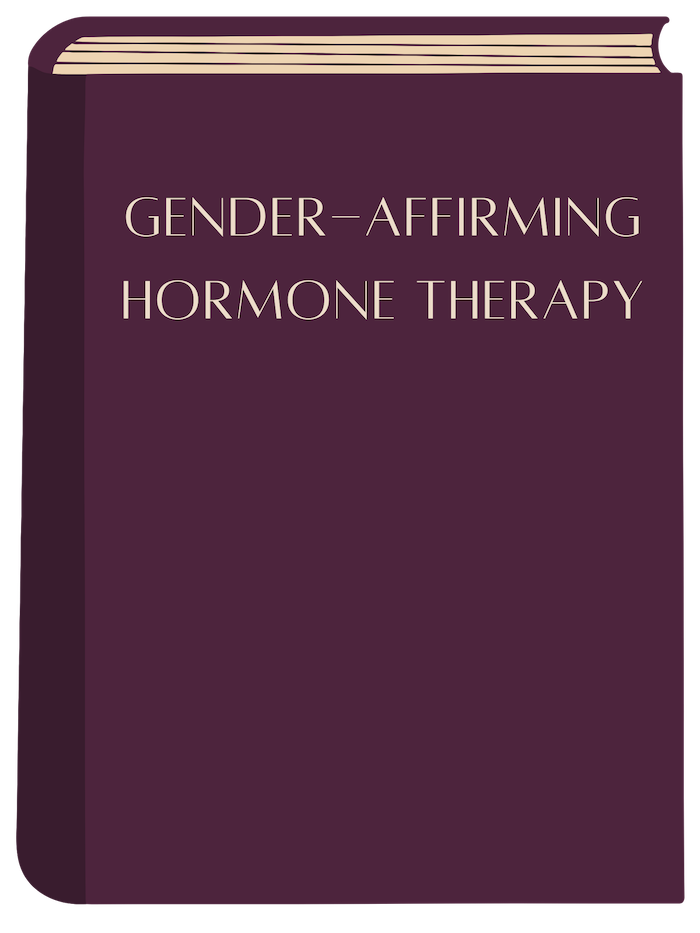
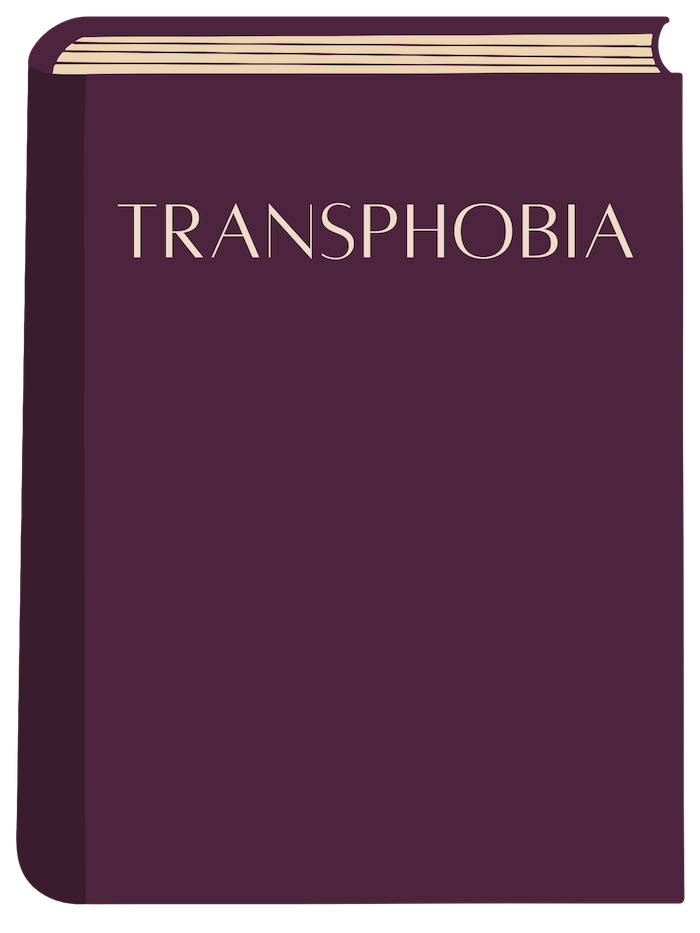
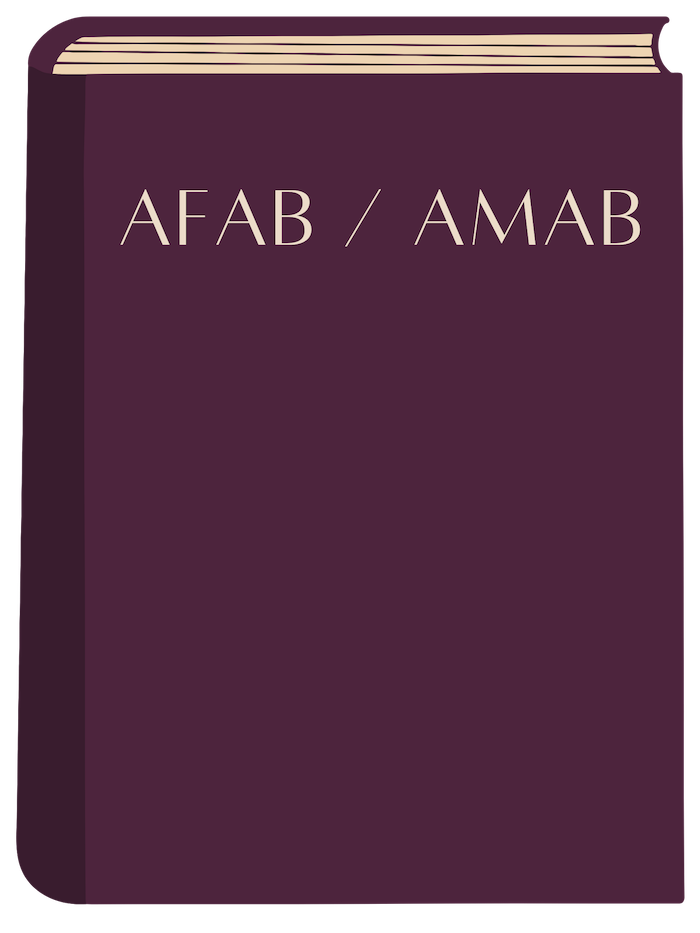
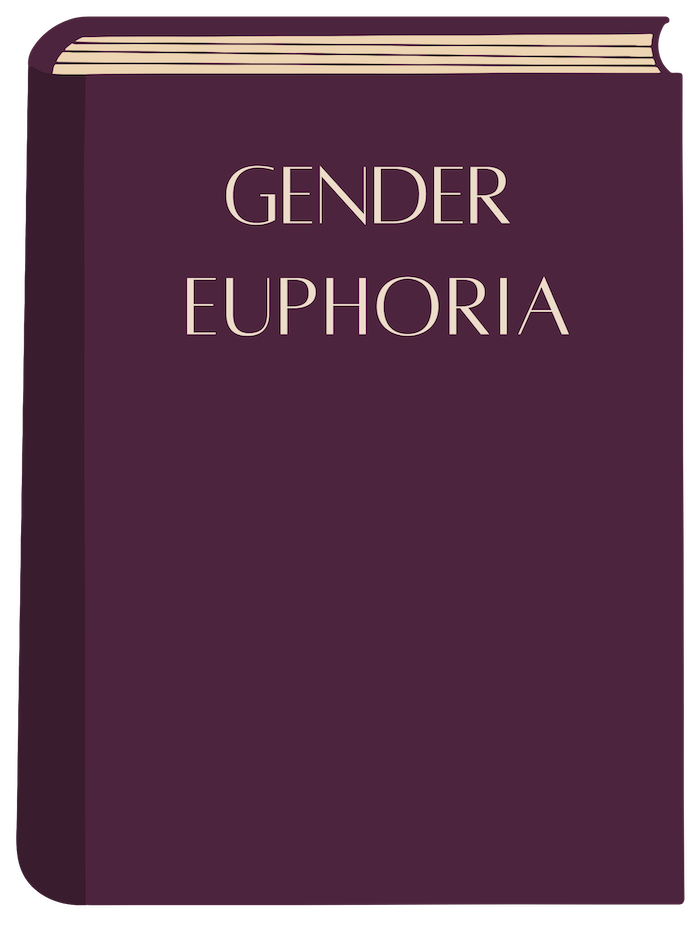
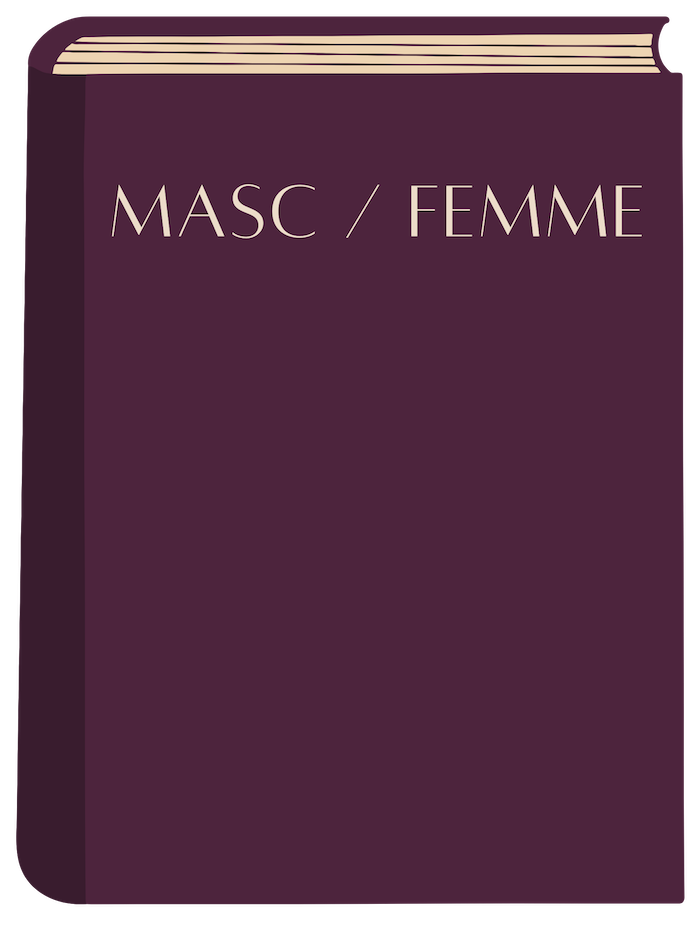
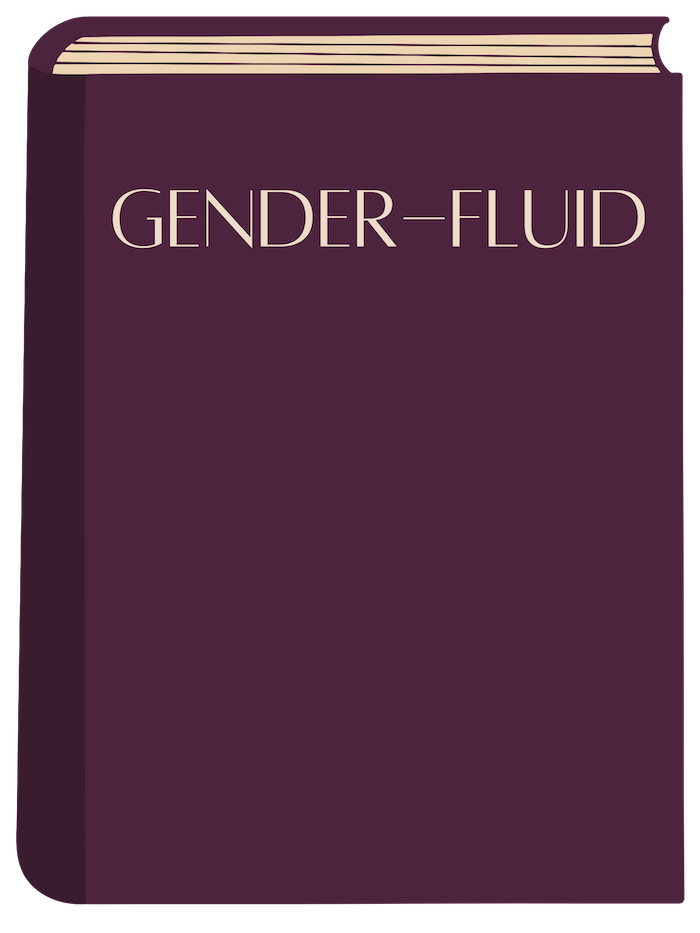
'ORGANIZED CHAOS'
Maeve Sullivan first posed for the camera as a child, landing every 4-year-old girl’s dream job—modeling for American Girl Magazine.
Dressed in a fuzzy blue Santa hat and photographed holding a Christmas edition Bitty Baby, Sullivan was the face of holiday cheer, encouraging parents across the country to purchase Bitty Babies for their daughters. And Sullivan’s core memory of that photoshoot, “I loved being pampered and getting to play with dolls.”
Nowadays the 23-year-old’s modeling career looks drastically different. Bitty Babies have been swapped out with designer sunglasses, Santa hats with couture and Sullivan no longer goes by she/her pronouns, but rather he/they ones.
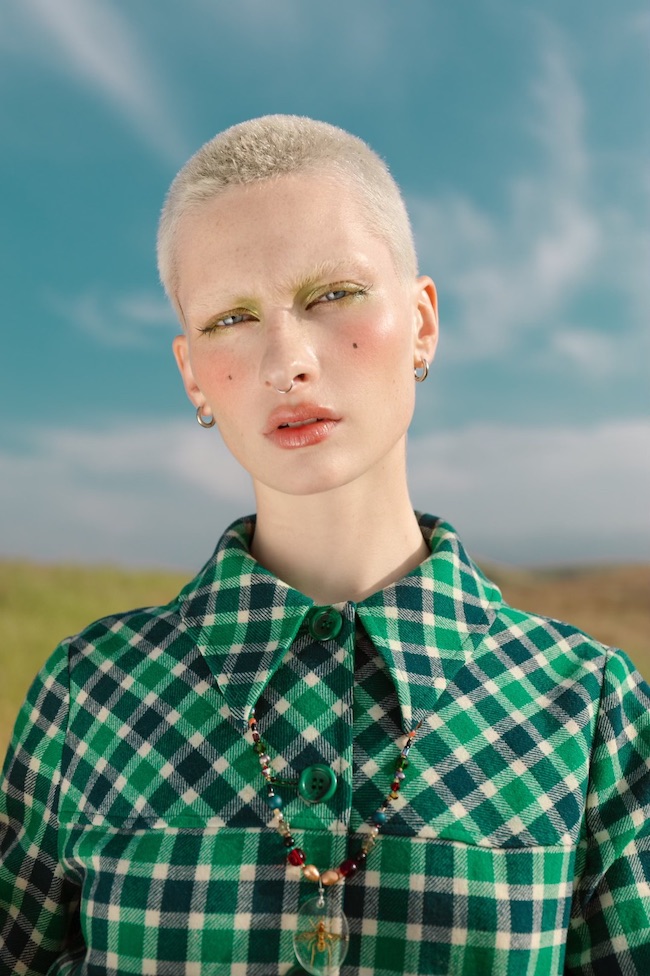
Portrait of Maeve Sullivan. (Photo by Hana Adams)
Modeling has evolved into a full-time career for the Chicago-born model. He uses the platform to fully embrace his nonbinary and transmasculine identity and uses genderless fashion as a vessel for greater trans representation. Sullivan says, ”I didn’t really come to terms with my gender identity through modeling, it's more that I think having more trans people in the modeling world is breaking down the barriers of that industry.”
Sullivan, embodying his self-described 'organized chaos' style, recently walked the New York Fashion Week runway for ADEAM. in an avant-garde satin mini dress. Despite his preference for clean silhouettes and vibrant clashes, Sullivan maintains an openness to the diverse styles that luxury brands might choose for him. “You don't have to fit this line between male and female in order to be nonbinary,” says Sullivan. “I used to think that I had to get other people's approval for how to dress, but I would see friends of mine dressing really masculine or really feminine and they would be nonbinary… I learned you don't have to prove it to anyone.”
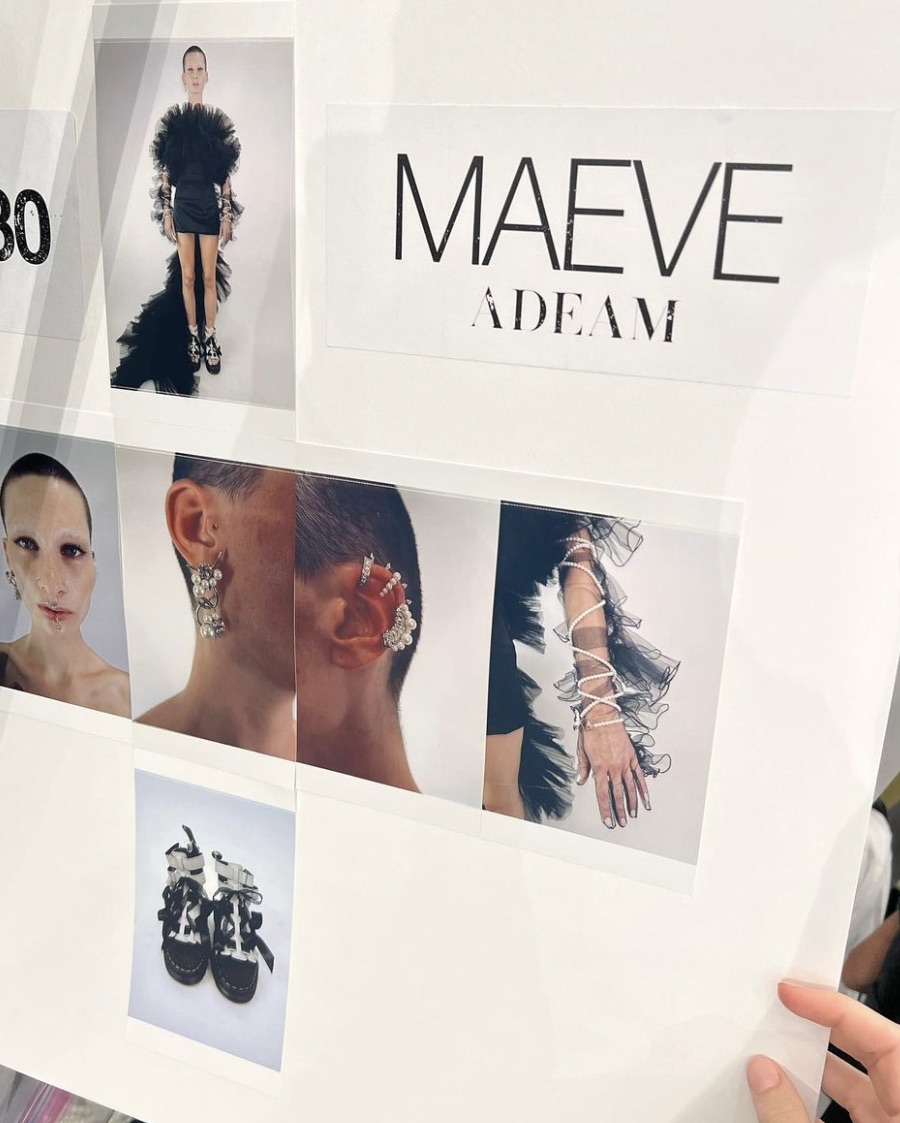
Maeve for ADEAM, NYFW 2023 (Photo Courtesy Maeve Sullivan)
This very exploration of self-expression is what led Sullivan’s modeling career to take a more serious turn in his college years. Scouted via TikTok, a social media gateway for fresh modeling talent, he was signed by a modeling agency. What Sullivan has noticed most since making modeling his day-to-day profession is a significant shift in the modeling industry's attitude towards gender categorization, deeming it a change for the better.
Gone are the days of being told what's "wrong" with his body or how to present himself. Instead, Sullivan says the industry now places a more considerable emphasis on hiring models for their whole persona, not just their appearance. “I think it's giving more opportunity to a wider variety of people, which I really appreciate. People want to see people who look like them in magazines, in stores, on runways.”
Many representations of genderless fashion are geared exclusively to a male audience, according to an article written by two professors from Unigranrio University for the Latin American Business Review. They point out how labeling dresses "genderless" in fashion seems to cross a limit, while long shirts that emulate dresses are allowed.
For Sullivan, who described his body as more on the “feminine side,” this contradiction reigns true. “When I’m not the token androgynous model, I’ll just get thrown in whatever the feminine outfit option is. As a nonbinary person, I don't wear as much menswear as I would like to.”
Sullivan wants the fashion industry to take a model's personal style into account more frequently. He knows that the primary purpose of modeling is to showcase clothing, but also believes that recognizing and celebrating the unique styles of models can lead to a more authentic and impactful representation of both the garments and the individual wearing them. Sullivan shares, “I think people look the best when they feel the most confident, and people feel the most confident when they're wearing something that they'd wear in real life too.”
'SUPER QUEER'
Alé Bersanetti walked the Gucci runway in a green satin suit, making her high fashion runway debut. This moment, she looks back on as the highlight of her modeling career; a positive experience accessorized with diverse casting and an empowering behind-the-scenes environment. Bersanetti felt like she had finally made it.
But there was only one shortcoming to this bucket list achievement—she was walking in menswear.
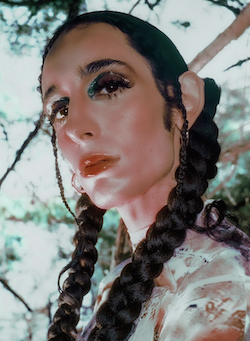
Portrait of Alé Bersanetti. (Photo Courtesy of Bersanetti)
Bersanetti (she/her) grew up in the San Fernando Valley as a self-proclaimed “818 girl.” Though assigned male at birth (AMAB), she expressed her femininity years before the now 25-year-old began transitioning. Just like many teenage girls, Bersanetti experimented with fashion in high school. She developed a punk personal style to set herself apart from the stereotypical Valley Girls and wore 6-inch heels to compliment her lean 6-feet-tall stature.
Modeling was not an intentional ambition in Bersanetti’s teenage world. Yet, a twist of fate led her to accompany a friend after school one day to a Yves Saint Laurent (YSL) casting call, where Bersanetti was thrown into the lineup of models. Escorted into a room filled with high anxiety and teenage boys, she recalls every model having the same petite frame, strong jawline and youthful features. “[YSL] wanted a certain look. I’d look around at the other models and it looked like someone was trying to draw me from memory.”
Back in those days, YSL was under the creative direction of Heidi Slimane, a period when the brand was captivated by the allure of L.A. rockers. After landing that initial gig, Bersanetti went on to participate in several YSL castings during her high school years. After all, she fit the look. Now reflecting back on her experiences through a more critical lens, Bersanetti sees beyond the glamor. “Honestly, [the castings] were weird and felt very fetishy,” says Bersanetti. “We were just a bunch of prepubescent teens in a room, half naked in skin tight clothing.”
Following several more of these experiences, Bersanetti put modeling on the back burner. She decided to venture into the teaching profession after high school and earn a more consistent income. However, the modeling universe had other plans. She was scouted again as a 21-year-old via Instagram, and signed with an agency.
The main difference this time around, aside from Bersanetti’s adulthood, was her openly transfeminine and nonbinary identity.
Her new agent was convinced that she possessed the ideal look for Gucci, a Fashion House renowned for its global fashion influence and genderless designs. She was flown to Italy for a casting and, in 2019, walked the Gucci runway. Bersanetti says, “The [Gucci] team is super queer. I remember the creative director wanted to have a more queer, androgynous look for his show.” She continues, “All the cis boys got to be in skirts or dresses, then I'm actually trans and nonbinary but they put me in a suit. I was just happy to be there.”
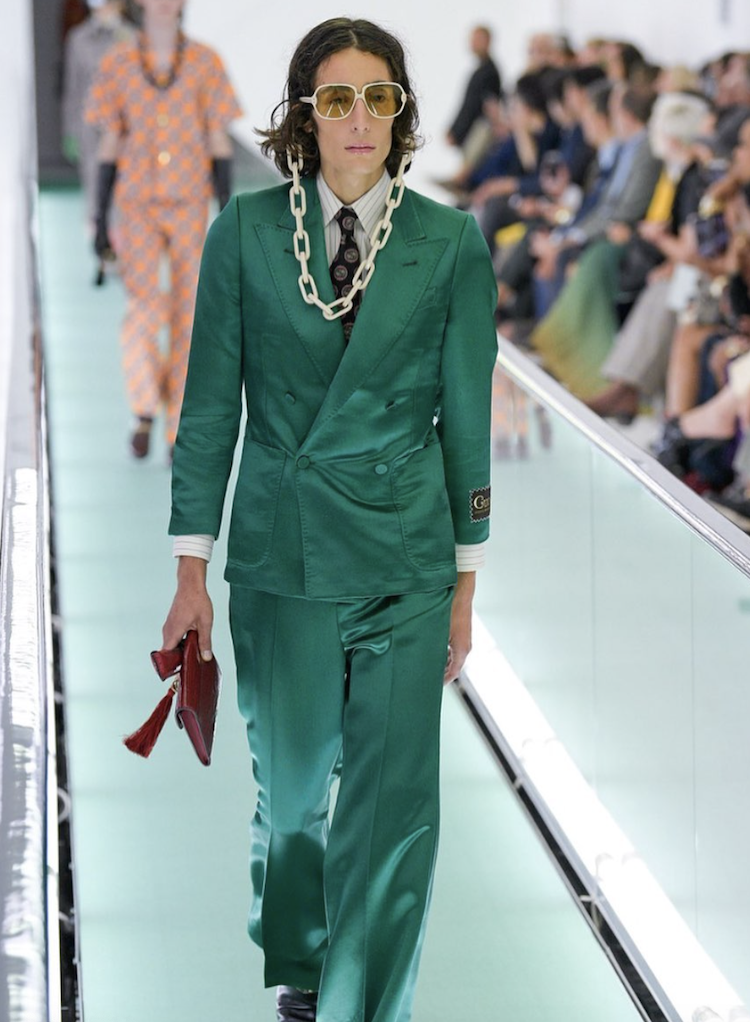
Bersanetti walking for Gucci's S/S20 Fashion Show. (Photo Courtesy of Bersanetti)
After finding success in menswear shows, Bersanetti decided to push her career in a new direction. She presumed that an industry, which prides itself on breaking boundaries, would embrace her identity as a trans and nonbinary model. Yet, a particular instance in Europe taught her the exact opposite.
Bersanetti flew back to Italy, hoping to be cast in high fashion womenswear shows. Excited to finally embrace her femininity on the runway, Bersanetti recalls, "I've always been queer and androgynous, but at that time, I'd just started to openly explore my gender identity." Pure adrenaline walked Bersanetti up to the front door of a casting for a high fashion brand. She felt confident sporting a long hair style and a pair of heels, wanting to present as feminine as possible. Before even speaking a word or showing her casting confirmation, a brand representative told her, “This is a woman's casting, this is not for men, you need to go home."
Feeling rejected and shocked by “transparent transphobia,” Bersanetti returned to Los Angeles with a new understanding of how the fashion industry truly views her gender identity. “Brands didn’t want me in Europe, period,” Bersanetti says. “But then during Pride Month, L.A. clients are rounding up every flamboyant gay they can find in the city to try and squeeze a cheap buck out of them.” These contrasting experiences made Bersanetti struggle to find the middle ground in the fashion industry—a place where nonbinary models can find a balance between authentic representation and the commercialization of identity.
She says many other nonbinary models share the same experience, allowing themselves to be tokenized in order to get booked. As concerns mount over the mismanagement and ethical discrepancies of nonbinary models within the fashion industry, Bersanetti's calls for a fundamental rethinking of the modeling industry. She says, “Models aren't allowed to collectively organize or form unions as a part of some horrible legislation. As a result, they’re really vulnerable to so many different forms of exploitation.”
After spending nearly a decade modeling, Bersanetti no longer chooses to navigate an industry that, in her experiences, oscillates between moments of progress and instances of bias. “I'm at a point with modeling where I just generally want to move away from it,” she says.
Though she is hopeful that upcoming designers and creative agencies will advocate for queer community, she finds it difficult to vouch for authentic progress amongst high fashion brands. “I ask myself, what type of representation am I really fighting to be a part of? I'm fighting to be a part of a representation that takes away all of the framework of my identity—and it’s used just to sell products.”
'DON'T PERCEIVE ME'
Raven Schexnayder received a modeling job offer from designer Frederick Anderson less than two hours before runway time. In a rush, she applied a thin layer of her Glossier foundation, grabbed her purse, and, knocking over a few household items in the process, hurriedly sprinted out the front door.
After a one-hour drive to the venue, Schexnayder sat down in the hair and makeup chair, where two white hair stylists roughly sifted through her curly afro, unaware how to style Black hair. Schexnayder recalls, “They were supposed to slick [my hair] into a ponytail, but they didn't do it right. They just let me walk that way and were telling me that it looks fine. I couldn’t make a fuss about it.” Instead of a sleek ponytail like the rest of the models in the show, a long piece of untextured hair extension was attached to the back of Schexnayder’s very textured hair.
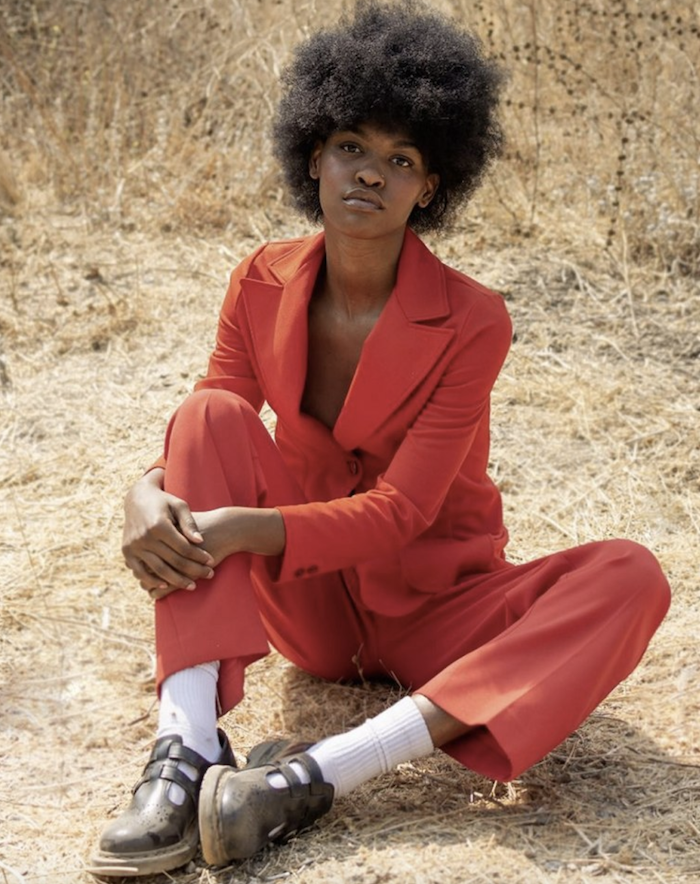
Portrait of Schexnayder. (Photo Courtesy of Schexnayder)
Schexnayder shared her experience on social media last summer, and it went viral.
More recently, Schexnayder has begun wearing braids to model castings, which she says has helped her significantly in booking jobs. “It doesn’t seem like my fro is very wanted,” she says. This has been a hard pill to swallow for the 22-year-old model, whose afro has always been a part of her identity. Schexnayder, who uses she/they pronouns and is from Fresno, California, has proudly worn an afro throughout her life. She particularly appreciates how this short hairstyle has empowered her to fully embrace both her personal style and gender identity.
Though as a kid she didn’t always know the correct terminology for her gender identity, Schexnayder found her own ways to convey it in the ways she knew how to. "As a kid, I would tell people that I was 'androgynous,' thinking that was the same thing as gender-fluid." Now armed with a deeper understanding of her identity, Schexnayder communicates it with unwavering certainty. She explains, "When it comes to my pronouns, it's more that I personally feel gender fluid, not necessarily that I feel trans. I don't really believe in what it means to be a woman and what it means to be a man."
Schexnayder remembers the first time her gender identity aligned with a modeling job. After signing with an agency in 2019, virtual fashion events unexpectedly opened doors for Schexnayder. She was cast to model for the renowned American fashion designer Thom Browne, an opportunity that proved to be not only a personal milestone in her career, but a moment of gender euphoria. "I don’t think I even realized how big of a deal it was at the time. That was my first time modeling in a suit and I love the way I felt in it," recalls Schexnayder.
After her experience with Thom Browne, Schexnayder proactively communicated her eagerness to modeling agencies, expressing an interest in securing opportunities specifically tailored for gender-fluid designs. This persistence has led her to model for gender inclusive clothing brands like Entire Studios and Reese Cooper.
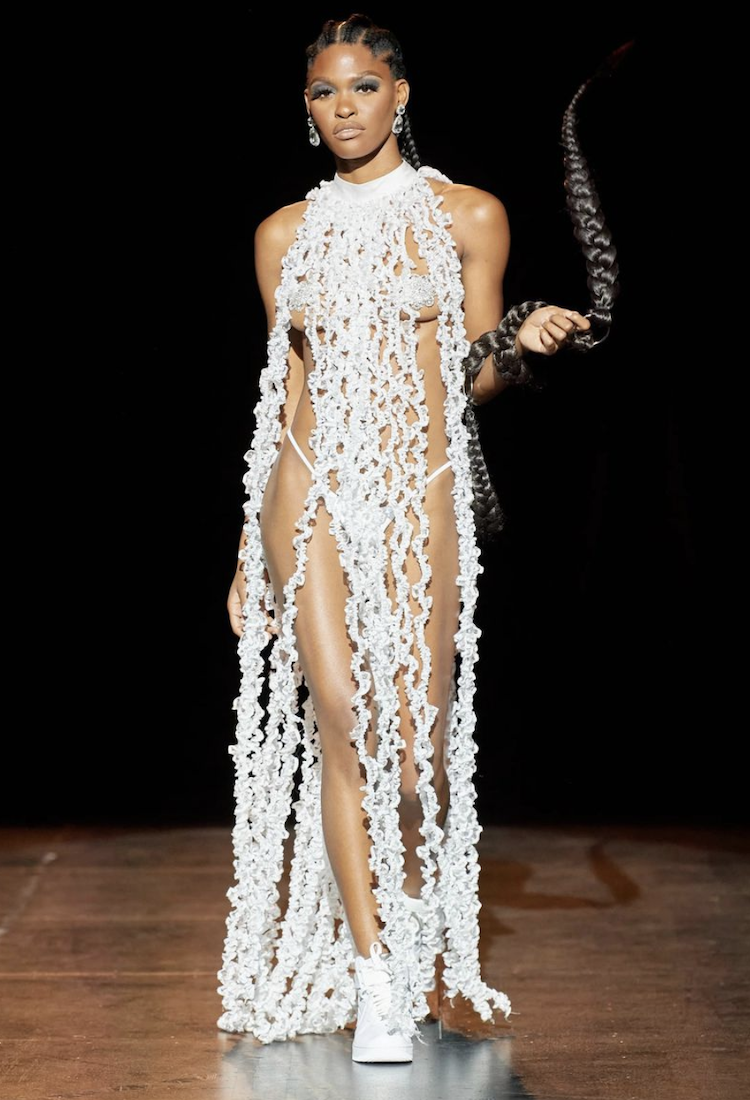
Schexnayder walking for Tia Adeola's S/S23 Fashion Show. (Photo Courtesy of Schexnayder)
Schexnayder consistently advocates for her gender identity in the fashion sphere, yet she feels that there’s a “category” of nonbinary she doesn’t fit. “If someone's like looking for a nonbinary model, it's not me that they're thinking of,” she says. “If there's a clear reference of what brands usually want, it's a white femenine person with a mullet or they’re bald. It's a very specific look.”
Schexnayder highlights a critical intersection in the ongoing discussion about nonbinary representation in fashion—specifically, the intertwining factors of race and gender. A recent article in The Journal of Adolescent Health emphasized the need for additional studies to grasp the social and cultural influences affecting Black and Latine individuals' access to gender affirmation.
While Schexnayder is unapologetic about expressing her nonbinary identity, she is keenly aware of how the fashion industry continues to perceive her, "Being nonbinary is one thing, but adding the layer of being a person of color and presenting yourself in a world where you know you're considered an afterthought is particularly challenging."
Despite these challenges, Schexnayder urges brands to prioritize the essence of her modeling work over preconceived notions tied to her identity. "Don't perceive me," she asserts. “Just see how the clothes look on me, and then you decide."